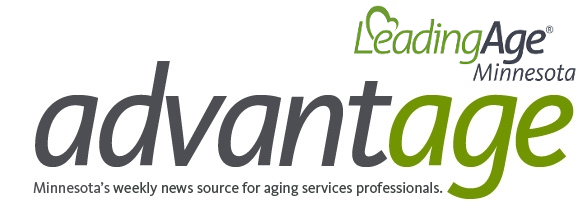Feb. 12, 2020
President Trump Releases Budget
On February 12, 2020 by Jodi Boyne
President Donald Trump this week released A Budget for America’s Future, which includes $4 trillion in mandatory and discretionary budget cuts in FY 2021 that would result in significant reductions to federal health care spending, including Medicare and Medicaid and other entitlement programs.
While the intent of the budget is to reduce waste, fraud, and abuse, it could ultimately limit resources available for long-term care at a time when demand is increasing. In our divided Congress, the President’s budget has no chance of becoming law. However, it does provide deeper look at the President’s agenda and aligned efforts to reduce growing budget deficits.
Our national affiliate, Argentum, provided an overview of select provisions included in the President’s budget relating that relate to public policies affected aging services providers:
Workforce Development
The budget supports additional funding to support opportunities for workers to access job skills to be fully employed including:
- Doubles the American Competitiveness and Workforce Improvement Act of 1998 fee for the H-1B visa program to provide opportunities to prepare American workers for jobs that are currently being filled from overseas, especially in science, technology, engineering and mathematics fields;
- Increases Career and Technical Education by nearly $1 billion to help ensure that every high school has a high-quality vocational program;
- Retools the American Workforce for Jobs of the Future by continuing to support and expand funding for apprenticeship programs to teach students the skills they need to obtain and retain high-wage jobs in a changing market;
- Allows states and localities to provide training and employment services more efficiently by allowing additional flexibility in how they spend their workforce development dollars; and
- Proposes to expand Pell Grant recipients’ eligibility to include high-quality short-term programs, with safeguards to balance students’ needs with protecting taxpayers’ interests.
Health and Human Services (HHS)
The budget requests $94.5 billion for HHS, a 10% decrease from the 2020 enacted level. It proposes $1.6 trillion in net mandatory health savings, reducing longer-term deficits by eliminating wasteful spending while preserving beneficiaries’ access to care, enhancing competition, and prioritizing federal resources for the most vulnerable.
Medicare: The budget includes several proposals that would eliminate excessive spending and distortionary payment incentives; refines reimbursement for uncompensated care and graduate medical education; and realigns incentives through site-neutral payment reform for post-acute care and other sites of care to make payments based on clinical needs of the patient, rather than site of service including:
- Authorizes long-term care hospital site neutral exceptions criteria—The budget proposes to better align payments to long-term care hospitals based on patient need by modifying the criteria for payment. The budget proposes to extend the criterion to at least an eight-day stay in an ICU, as recommended to better identify chronically ill patients who would more likely benefit from a long-term care hospital.
- Modifies payment for hospice care provided to beneficiaries in skilled nursing and nursing homes — Reduces hospice reimbursement by $10 per day to account for the separate Medicare and Medicaid payments already provided for personal care services delivered to beneficiaries who elect hospice in skilled nursing and nursing homes.
- Reforms and expands durable medical equipment competitive bidding—Implements a more rational approach for setting payment rates in competitively bid areas by eliminating the single payment amount and paying winning durable medical suppliers at their bid amounts.
- Expands basis for beneficiary assignment for Accountable Care Organizations (ACOs)—Provides additional flexibilities to increase savings through ACOs by expanding the basis for beneficiary assignment to a broader set of primary care providers, including nurse practitioners, physician assistants, and clinical nurse specialists, moving more beneficiaries from fee-for-service Medicare to value-based care.
- Expands prior authorization to additional Medicare fee-for-service items at high risk of fraud, waste and abuse—Expands the Medicare program's authority to conduct prior authorization on certain items or services that are prone to high improper payments, including, but not limited to, inpatient rehabilitation services.
Administration for Community Living – The budget requests $2.1 billion in discretionary budget authority and $56 million in mandatory funding including:
- $39 million to protect vulnerable older adults to support the presence of ombudsmen in long-term care settings in all states and to support ongoing development of state Adult Protective Service systems in 20 states;
- $19 million for Alzheimer’s Disease activities.;
- $937 million for Senior Nutrition programs;
- $425 million for Home and Community-Based Supportive Services;
- $18 million for the Senior Medicare Patrol program, which supports nearly 7,000 Senior Medicare Patrol team members nationally, who help identify and prevent Medicare fraud across the country;
- $36 million to help seniors through Preventive Health Services and Aging Network Support Activities;
- $27 million for Alzheimer’s Disease Program to fund grants for states, tribes and community-based organizations; and
- $164 million for these programs to support both family and other informal caregivers.
Medical Liability – To reduce health care costs and health insurance premiums, the budget proposes to reform medical liability beginning in 2021. The proposal which must be further developed is expected to reduce medical liability insurance premiums and defensive medicine practices.
